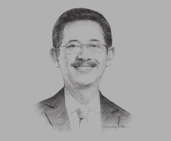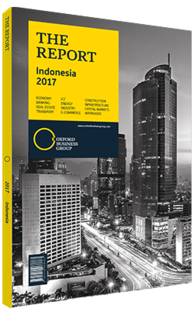Bambang Tjahjono, President Director, AirNav Indonesia: Interview

Interview: Bambang Tjahjono
What are the priorities for air traffic control in Indonesia in terms of investment and strategy?
BAMBANG TJAHJONO: We will invest more than Rp2.2.trn ($160.6m) over 2016 in modernising equipment, maintaining devices and upgrading systems in more than 270 airports operated by Angkasa Pura I and II and the Ministry of Transport. Our equipment consists of facilities for communication, navigation surveillance and automation. Another major target for 2016 is to modernise the air traffic system in Jakarta’s International Airport Soekarno-Hatta. This is crucial, as all of the western Area Control Centre (ACC) of Indonesia is controlled from Jakarta, while the eastern part is controlled from Makassar, which has already received a recent system upgrade.
It is also important for Indonesia to take over the ACC that is responsible for the Natuna Islands, which is currently controlled by Singapore, as this is Indonesian airspace and the traffic in that area is dense. Indonesia is expected to be handed control of this ACC by 2024. We need to be aware of the fact that nowadays, all airports are competing to be hubs, and Indonesia needs to find the right balance to ensure that carriers feel safe while flying over Indonesia, while also maintaining more efficient and competitive routes. The problem is that airlines in Indonesia are growing very rapidly following the opening of local carriers, and it is hard to respond to this increase in activity while raising our standards at a similar pace.
How do you assess the current needs in the air traffic control labour force?
TJAHJONO: Not only do we need to modernise our equipment, but we must also increase the competency of our personnel. To this end, we train our people in high-intensity runway operations, so that they are able to work with dense traffic. For this, we have an agreement with London’s Heathrow airport, and have also signed an agreement with Toulouse’s Ecole Nationale d’Aviation Civile to deliver master’s courses. In addition, air traffic controllers should be sourced from local training centres. Today, we have around 1400 air traffic controllers in Indonesia, and we also have 500 in the Indonesian Air force. The number of private air traffic control schools for beginners is growing, but we need to prepare ourselves to deliver training for advanced skills, too. As of 2016, we still need 400 air traffic controllers in Indonesia. It is also vital that we prepare for technological advances, not only in new equipment, but also in new aircraft.
How can Indonesia increase capacity to prepare for the ASEAN open skies agreement?
TJAHJONO: The government is working hard to develop technology and to improve the airports in Indonesia by building new terminals and extending runways. Airlines are expanding not only in Indonesia, but also abroad in countries like Thailand and Malaysia. This partly in anticipation of the ASEAN open skies agreement. At the Soekarno-Hatta airport, for example, a new terminal is being built to accommodate Airbus A380s. The challenge now is to distribute resources to our five hubs: Jakarta, Bali, Surabaya, Medan and Makassar. These efforts are constrained, however, by the issue of land acquisition, and more specifically by the high price of land for the expansion of existing airports and the building of new ones.
In the face of these challenges, Indonesia is working hard to improve infrastructure in all areas, and within two or three years the results will be visible. This will take time, but we are on the right track. Once we have raised the standards of services and equipment in Indonesian airports, we will have to negotiate with the International Air Transport Association to raise tariffs to the same levels as Australia or Singapore. This will allow us to increase our revenues and boost our investment capacity for training personnel, and modernising infrastructure and equipment.
You have reached the limit of premium articles you can view for free.
Choose from the options below to purchase print or digital editions of our Reports. You can also purchase a website subscription giving you unlimited access to all of our Reports online for 12 months.
If you have already purchased this Report or have a website subscription, please login to continue.

